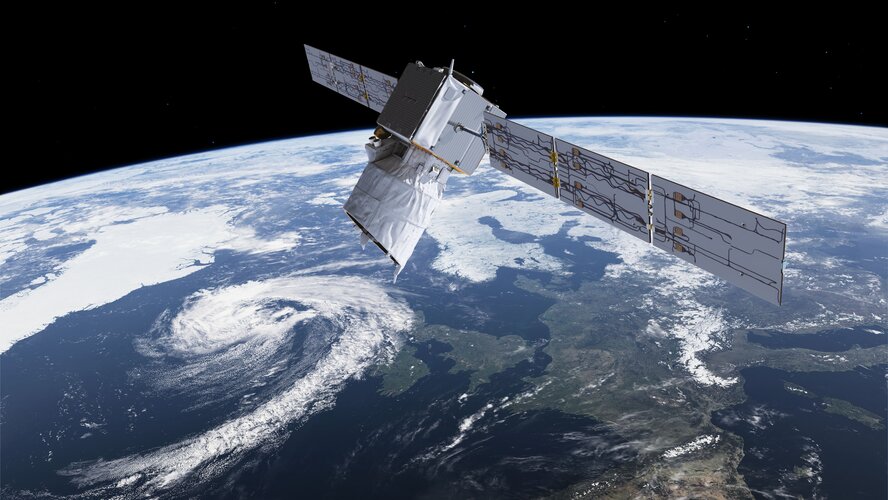A trailblazing wind mission

Aeolus, ESA’s fifth Earth Explorer, was tasked with an extraordinarily challenging and pioneering feat: to measure global winds from space using a laser.
Its launch in 2018 was an achievement some thought might not be possible, especially after many years of grit and determination to make its experimental technology work. Plenty of headscratchers and setbacks were encountered along the way.
Once in orbit Aeolus met further trials, being forced into switching to its back up laser less than a year after launch.
The struggles were worth it, as Europe’s wind mission triumphed.
Aeolus data are now used by major weather forecasting services worldwide, including the European Centre for Medium-Range Weather Forecasts (ECMWF), Météo-France, the UK Met Office, Germany’s Deutscher Wetterdienst (DWD), and India’s National Centre for Medium Range Weather Forecasting (NCMRWF).
Its many successes, including economic benefits valued at over €3.5 billion, mean that an operational follow-on mission called Aeolus-2 will be launched within a decade.
Remarkable improvements in weather forecasts
Aeolus carries an instrument known as ALADIN, which is Europe’s most sophisticated Doppler wind lidar flown in space. A laser fires pulses of ultraviolet light towards Earth’s atmosphere, and a receiver detects the light that is scattered back from air molecules, water molecules, and aerosols such as dust.
Thanks to subtle changes in the properties of the light that is received, we can measure how quickly these particles travel away from Aeolus - the speed of the wind.



